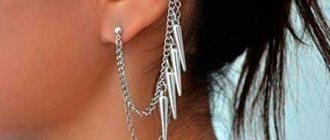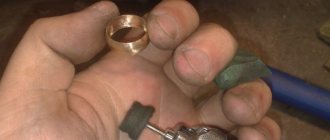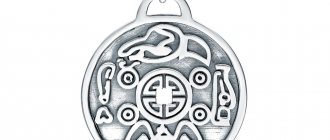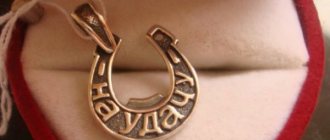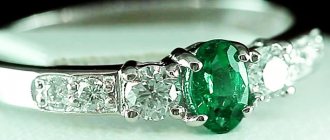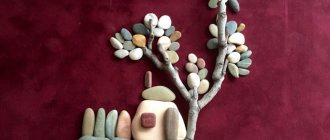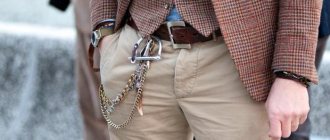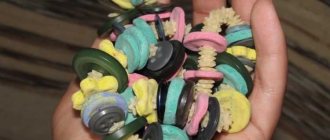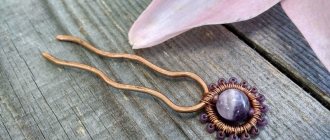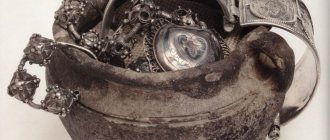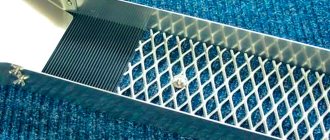Every person has once been given gold items that either did not fit in size or did not like the shape. Not many partners can please a capricious lady with a gift. Melting gold and making it into another piece of jewelry that will delight you is a rather difficult and lengthy process. Many jewelry workshops accept for melting down jewelry that doesn’t suit you, doesn’t like it, or is torn. Sometimes you can make a completely new ring from a torn bracelet or chain, which will delight you no longer on your neck or hand, but will look elegant on the phalanx of your finger.
Material for creating a ring
Commonly used raw materials for rings are:
- Wire;
- Metal;
- Tree;
- Buttons;
- Resin;
- Beads.
Before you start creating a ring, you need to think about the upcoming design. There are many manufacturing options, we will present them in order.
Made from wire like a bow
This is an unusual model, but easy to create. Here you will need steel or copper wire. It should be 15 cm long, average thickness, it is important that it bends well. A tool such as a cone will be useful in your work, which can be used to arrange the desired size of the ring.
Such special fittings allow you to give the product a suitable shape without losing the intended diameter.
The device can be found and purchased on the websites of handicraft stores, and instead of a cone, a familiar candle will do.
The product is formed by the following actions:
- The cone or candle is wrapped in a circle with wire.
- The two ends intersect.
- Bow elements are formed from the pieces at the ends by bending the wire at both edges.
- As a result, both ends of the wire are bent so that a knot comes out.
The remaining elongated tails are trimmed.
How much does it cost to melt down a gold item?
If your chain or bracelet is broken, it will be more profitable and much faster to simply repair the product, because the jewelry will weigh little by gram, and jewelry makers charge for each gram that is melted down. The price of melting gold in this case can significantly exceed the finished product, which can be bought at the same jewelry store. It is profitable to melt several products whose weight will exceed 10 grams.
Imagine that you were given a small golden sculpture; it is better to melt it down and make several rings out of it, than for it to stand in your closet and gather dust. And looking at the beautiful products that you will wear, pleasant memories of the person who gave you such a generous gift will come to mind.
On average, in many jewelry workshops it costs 500 rubles per gram to melt gold of the lowest standard 375. Craftsmen have to clean low-grade metal from various impurities quite carefully so that the final product turns out beautiful, shiny and not cloudy. Keep this in mind if you decide to recycle low grade material.
Many buyers bring cheap precious metals from China or Turkey for processing. There are few craftsmen who will undertake to melt such low-quality and cheap material; you will have to carefully look for someone who will begin to fulfill your request.
The most popular standard of gold products is 585. How much does it cost to remelt 585 gold? In each workshop it is different, depending on the qualifications of the master, on average from 1000 to 1500 rubles. Agree, pleasure is not cheap.
The melted material evaporates by 10% during processing; no one will return this difference to you, since the error, although small, will be there in any case. During operation, the material may splash, and before starting, during melting, it flies away.
DIY antique ring
This method also makes it easy to make a ring. In this option, you will need a base for the ring, but without a platform. The materials for the work process will be: a button of an unusual shape and shade, pliers, super glue, an ordinary ring used as a base.
- Buttons on legs are not the best option in this case.
- If you can’t find another button, then you can bite off the stem with pliers.
- The button is glued to the base and you will get a unique vintage product.
- There are different types of bases for rings offered for sale.
Based on the properties of each, it will be possible to create separate models of rings, using a wide variety of materials, as well as accessories.
Wooden ring
To make it, you don’t need natural wood at all. Just a couple of pieces of veneer are enough. We will also need cylindrical objects to create shapes. And of course glue and sandpaper.
We cut the wood veneer into strips. Take a container of water, immerse the veneer in it and heat it in the microwave for 5 minutes.
We wrap strips of veneer around the cylinder and tie them with rope. Place the products in the microwave oven (without water) for one and a half minutes. This will be the external blank.
We proceed to the internal workpiece - we wrap several layers of veneer onto a cylinder with a smaller diameter. Glue the ends together and sand the joint.
Next, thoroughly lubricate the product with “Moment” and attach the outer part on top. We cut off the remains, dry and sand.
If desired, the surface of the finished ring can be varnished. If something is not clear, there is a video on the Internet on how to make a ring from wood.
Types of bases
- The basis with the setting. This is an excellent idea to create a seal using natural stone or cameo.
- For a ring with a platform. This does not mean that only stones and other decorative elements can be glued onto it. There are areas with holes called a sieve. You can insert thin pieces of wire with beads or seed beads into the holes to form an elegant ring.
- With filigree. This is an eye-catching option. Such bases can independently cope with the role of a prepared ring that does not require decoration. They have a platform like a butterfly, flower, bow and other images; in the middle there are patterns like lace. Still, don’t stop, you can add your own creative flair by adding beads or beads to the design.
There is no need to ignore the basics with the presence of loops, pins and various other elements.
Caring for combination wedding rings
On the Internet you can find advice that combined models should be treated with special delicacy. This recommendation is valid for rings made by soldering and, of course, those whose two-tone color is due to the presence of a rhodium layer. Sintered dual-alloy gold bands do not need any special treatment. The same care recommendations apply to them as for a simple wedding classic.
If the method used to create the combo rings is not the most reliable, it is unlikely that the sales assistant will tell you about the production method. It is possible that company representatives chose not to educate their employees about such nuances. Don't be shy to ask direct questions. If the seller cannot answer them, ask to invite the administrator or director of the salon to get an answer. You can also focus on cost: the price of a combination ring that is lower than the market average should alert you.
A pair of combined wedding rings without inserts 450-000-717 (sintering). Price - follow the link
Ring with beads
For the working process you will need: beads, beads and wire. For this case, it would be better to buy thick-section wire to prevent further distortion of the product.
The creation steps are as follows:
- The wire is wrapped around the cone 2-3 times.
- Place 1 bead on the existing ends.
- The ends are bent so that the beads do not come off.
- Beads are strung on a thin piece of wire.
- The created bead wire clings to the ring and wraps it around the area with the beads.
A beautiful product will come out.
How jewelry is made
Nowadays, generalist jewelers who make jewelry alone are becoming less and less common - the main range on the market is produced in a completely different way. At jewelry enterprises, each craftsman is exclusively engaged in his own business: some specialists work with blanks, others are responsible for setting precious stones, and still others are engaged in polishing. And if everyone does their job not just well, but flawlessly, then the quality of the finished jewelry will be very high.
wire ring
To work you will need tools: wire cutters, wire, pliers, marker.
The wire is suitable for any shade and thickness.
- Using pliers, you need to bend the end of the wire to the mark on the wire. It is important to check that it touches the wire as close as possible.
- The same is done on the other side and the first crooked figure eight is obtained.
- Take the edge of the wire where half of the sign is still missing and you need to turn it over, moving to the other side.
- The excess wire is cut off and a beautiful infinity comes out.
- Now the ring holder is made. To do this, wrap a second piece of wire around the marker. You need to press it closer to the marker. Then it is put on the finger and moved slightly for a better position on the hand. A little bit of excess is trimmed off, but not too much. It should go almost full circle.
- The edges of the strap are slightly bent to secure the central infinity element at the ends. The ends should look like the hooks on a keychain.
- If all is well, there should be some excess wire left on the other side of the tape, this will be enough to repeat the previous steps of bending the tape. You need to do this and push this end of the tape through the other end of the sign. It is clamped, as before, on the other side.
At this stage, the magnificent ring with the infinity sign is ready; the manufacturing time is only 10 minutes.
The most unusual and most expensive orders
— Are there orders that surprise you?
- Yes. For example, there was a 370 g silver anchor chain that a 100 kg bodybuilder was going to use to do pull-ups. Colleagues said that nothing would work, it would break - but it didn’t break.
The accordion pendant was ordered by a client from another city. “Thanks to this order, I remembered how an accordion differs from a button accordion,” says Alexander.
Once they ordered me a medallion with a pentagram, which I had to finish making on Tuesday - only on this day there is some special energy.
Sometimes they order things that many people wouldn’t even think of, but I’m not surprised: everyone has their own cockroaches, everyone lives as they want. That’s why I do it, and if a person is happy, I’m happy too. One of the most unusual orders was a silver rod for the urethra. The customer wrote that he was satisfied.
— What is the most expensive jewelry that was ordered for you or brought in for repair?
– We ordered two large chains made of 750 gold for 550 thousand rubles. And for example, they brought in a Cartier bracelet worth 1.2 million for repair; a diamond fell out of the jewelry. It’s exciting to work with such things; it’s scary to damage or ruin them. It's better not to know how much it costs at all.
Leather strip ring
To create this wicker ring, you will need: wire, a leather cord of your favorite color, pliers and a base, its diameter is the diameter of the hostess’s finger.
It’s not scary if the base turns out to be a little thick - the advantage of this ring is that you can always adjust it to your size by tightening the spiral of wire tighter.
For manufacturing, the following steps are taken:
- The wire is wound onto the base, making several turns, then the resulting spring is slightly stretched.
- Excess ends are cut off.
- To prevent the edges from pricking, you need to bend them into mini loops.
- Take a leather cord with which the spirals are intertwined. To do this, the edge of the lace is passed, sometimes above the wire, sometimes below it.
- The same thing is repeated in the other direction. Weaving continues until the entire ring is wrapped with a leather cord.
- The excess piece of lace is cut off and tucked into the product.
This completes the braided ring. In this matter, it is important to show more imagination and create your own unique design. There are a lot of tips for making it, it is important that you have the desire to create and the result will certainly please you.
Development of the ring manufacturing process
Pages: 1
CONTENT
- INTRODUCTION
- REVIEW OF WORK ON THE PROBLEM SOLVED
- 1. ART HISTORY SECTION
- 1.1. Jewelry – ring
- 1.2. Jewelry - ring in the modern jewelry market
- 2. ART SECTION
- 2.1. Sketch development
- 2.2. Justification for the choice of shape and color
- 3. SELECTION OF MATERIALS
- 3.1. Selection of metal material
- 3.2. Choosing inserts for jewelry
- 4. TECHNOLOGICAL SECTION
- 4.1. Selection of production technologies
- 4.1.1. Production of a single copy
- 4.1.2. Jewelry manufacturing technology - ring
- 5. DESIGN SECTION
- 5.1. Equipment used to produce jewelry - ring
- 5.2. Jewelry drawing - ring
- 6. COMPUTER SECTION
- 6.1. Development of a 2D or 3D computer model
- 7. LIFE SAFETY
- 7.1. Analysis of possible dangerous and harmful factors, and emergency situations
- 7.2. Development of measures to ensure reduction of the harmful impact of the technological process on the site on the environment and on humans
- 8. ECONOMIC SECTION
- 8.1. Organization of the production process
- 8.2. Calculation of the cost and price of a design variant product
- 8.3. Determination of technical and economic indicators
- CONCLUSION
- BIBLIOGRAPHY
INTRODUCTION
Jewelry casting of jewelry is the most interesting technology for the production of jewelry.
This technology includes different stages and combines classic processes for the industry and the latest developments.
When developing a technological process for creating jewelry when constructing a particular model, a 3D model is used, when 3D designers create sketches of future jewelry and implement them using 3D modeling programs.
The chosen topic is also relevant due to the trends that are occurring in the jewelry market, which has recorded an increase in demand for this type of product in recent years (2011-2013), and it is also worth noting the increase in demand for jewelry that is created for the client on the basis development of an individual project.
The purpose of the research is to develop a technological process for creating a silver ring.
To achieve this goal, it is necessary to solve the following tasks:
— analyze information about the silver ring from the point of view of artistic representation;
— determine the specifics of the choice of materials;
— analyze the features of the silver ring production technology;
- identify the design features of a silver ring;
— determine the computer software that is necessary when creating a silver ring;
— consider compliance with life safety rules when making a silver ring;
— analyze the economic component of the process of making a silver ring.
The object of study is a silver ring.
The subject of the research is the technology of making a silver ring.
Research methods - theoretical analysis, monitoring, synthesis, induction, mathematical methods, etc.
The structure of the study consists of content, introduction, review of works on the problem being solved, 8 sections, conclusion and bibliography.
REVIEW OF WORK ON THE PROBLEM SOLVED
As part of writing this study, educational, scientific, and journalistic literature on the topic of research by Russian and foreign authors was analyzed.
As part of writing this study, an analysis was carried out of works in the field of art history by domestic and foreign authors in the framework of creating sketches of a silver ring, as well as the history of the development of this jewelry.
An analysis of the technical literature on the topic of this research was carried out, within the framework of which the technological features of creating ring-shaped silver jewelry were identified.
As part of writing this study, an analysis of the literature in the field of information technology was carried out, which made it possible to identify computer programs that are used in the creation of jewelry.
When writing this study, economic literature from domestic and foreign authors was used, which made it possible to calculate technical and economic indicators for the manufacture of a jewelry ring.
When writing this study, special literature in the field of life safety was also analyzed, which made it possible to determine the basic requirements and their rules that must be observed during the manufacture of a silver ring.
ART SECTION
The art history section involves an analysis of the theme of jewelry rings in the history of jewelry, as well as an analysis of the jewelry market. In addition, the main motives that influence the choice of jewelry by different consumer groups will be analyzed.
1.1. Jewelry – ring
Ring - an object in the form of a rim, a hoop made of metal, wood, stone, bone, glass, worn on a finger; common among most peoples of the world. The word “ring” itself comes from the Old Church Slavonic root “kolo”, meaning wheel. But there is another interpretation - from the French “collier”, which means “neck”, “necklace”, “collar”. A hoop with a large insert in the form of a shield is called a ring [14, p. 15].
The history of rings goes back to ancient times. According to legend, the inventor of this decoration was the thunderer Zeus, who ordered Prometheus to wear the link taken from his shackles on his finger. According to another version, Prometheus himself brought fire to people, freeing them from the yoke of the gods. In the book B.S. Vladimirsky’s “Stones: Secrets and Sacraments” we read: “The graphic expression of the idea of liberation becomes a hand holding out fire. There is a ring on the finger. What are these decorative delights? An artist's fantasy? No. The ring is a symbol. The chains with which the titanium was chained to the rock were reforged into a kind of sign of memory of the torment experienced, into a symbol of insubordination. A stone was inserted into it - a fragment of the Caucasian rock. This is the legend about the origin of the rings and rings.” Bone rings appeared already in the Paleolithic era, metal ones - in the Bronze Age. However, in ancient times, a ring was not only a decorative item, but also had purely utilitarian functions. In ancient times, there was “the custom of wearing a seal on the finger, equivalent to a personal signature and at the same time serving as decoration. Usually such seals were worn on the index finger of the right hand" (Prevost G., "The Art of Dressing", St. Petersburg, 1892). Such seal rings with carved inscriptions or images were common in Ancient Egypt. The imprint of such a ring served as the signature of the owner. The Aegeans, Greeks and Etruscans then had seal rings. Rings were also worn for professional or everyday reasons. You can still see ring-shaped thimbles, which are used, for example, by shoemakers. Archers at one time wore three rings - on the index, middle and ring fingers, in order to protect themselves from cuts from the bowstring. In fist fights, they often used peculiar brass knuckles in the form of rings with massive inserts of stone or metal. Rings were extremely common in the ancient world, and then it was not just decoration, but also a symbol of a certain social status: in the Roman Republic, senators and equestrians wore gold rings, and ordinary citizens wore iron ones. Later, the rings served as a kind of pass or identification card. They were worn by members of monastic orders and secret political societies. In particular, in one novel by A.F. Pisemsky describes the ring worn by Russian Freemasons: a cast-iron signet, with Adam’s head with shin bones and the inscription “So you will be” carved on it. For Catholic bishops, the ring is a sign of their authority.
In pre-Petrine Rus', tsars - from Ivan the Terrible to Alexei Mikhailovich - adored rings and rings and wore them on all fingers, including the thumb - the so-called napalok, a symbol of power. Later A.S. Pushkin will wear a ring on his thumb as some kind of extravagant sign of his chosenness. “Keep me safe, my talisman,” he addressed these words to the treasured ring given to him by E.K. Vorontsova in 1824. After Pushkin’s death, V.A. inherited this ring. Zhukovsky, then it passed to the latter’s son, and he, in turn, transferred the shrine to I.S. Turgenev. After the death of Turgenev, who wanted to send the talisman to L.N. Tolstoy, thanks to Pauline Viardot, the ring ended up in the Alexander Lyceum, where Pushkin once studied and from where he was kidnapped during the February Revolution. Nowadays in the Pushkin museum-apartment in St. Petersburg you can see another carnelian ring, which was inherited from the poet M.N. Raevskaya, who later became the wife of the Decembrist Volkonsky. This ring is also a talisman, it is made of carnelian, but less brightly colored, there is a design on the stone - three cupids sitting in a boat. During the reign of Nicholas I, it was customary to celebrate the merits of artists with expensive trinkets, and, above all, rings with diamonds and rubies. A considerable number of such rings were collected by the Karatygin brothers, actors of the Alexandria Theater. Nicholas I considered a ring with its monogram almost equivalent to an order. Alexander II had already begun to give gold medals to distinguished cultural figures, but Alexander 111 presented A.N. Ostrovsky received a diamond ring as a sign of his services to the Russian theater. So in the new history of Russia, no, no, yes, the ancient tradition is returning - the ring becomes a symbol of state support for a creative personality.
Smooth, unadorned rings as wedding rings are used by many peoples for marriages (they began to be used in ancient Rome). “The power of the engagement ring is strong,” wrote K.D. Balmont. A wedding ring is like a link in a huge “marriage chain,” in the words of Igor Severyanin, with the help of which the engaged are connected to the worldwide connection of people, thereby forming a “world ring” (Balmont). In addition, betrothal is the joining of hands of those entering into marriage. Wedding rings, and sometimes engagement rings, were put on the finger long before the wedding, sometimes even for children: for the groom - gold, for the bride - silver, and sometimes, on the contrary, for the groom - silver, a sign of strength, for the bride - gold, a sign of purity and purity. According to legend, when betrothed to the Virgin Mary, Joseph put a ring on the middle finger of his left hand. In ancient church rites, during the wedding process, it was customary to transfer the ring from finger to finger: on the thumb - with the words “in the name of the Father”, on the second - “and the Son”, on the third - “and the Holy Spirit”, and then on the fourth, where the ring has already been left. Since the times of Ancient Greece, people have believed that the ring finger of the left hand has a close connection with the heart. The right hand is power, the left is the heart.
Bone rings appeared already in the Paleolithic era, metal ones - in the Bronze Age. Ancient Egypt. The imprint of such a ring served as the signature of the owner. The Aegeans, Greeks and Etruscans then had seal rings. In the Roman Republic, senators and equestrians wore gold rings, and ordinary citizens wore iron rings. Under the empire, this rule was abolished: from the 3rd century. all freeborns received the right to wear gold rings, and freedmen - silver ones. For Catholic bishops, the ring is a sign of their power [67, p. 24].
1.2. Jewelry - ring in the modern jewelry market
The jewelry market is one of the most dynamic markets in Russia. According to experts, the volume of jewelry sales in Russia in 2008 is estimated at $6-6.5 billion dollars, and in 2009 it fell to 50-60% of this volume. In 2010, the jewelry market volume was about $5.0 billion. Note that, according to market participants, the share of counterfeit products accounted for about 70%.
In 2012, the volume of the Russian jewelry market amounted to 82.9 billion rubles. at retail prices.
The development of the jewelry market creates a growing demand for its research. Today, in both the Russian and global markets, a large share of marketing research is accounted for by B2C research. B2C (Business to Customer) is a conventional name for companies whose end consumers are individuals.
The objects of such research are individuals. At the moment, there is a wide variety of marketing research methods for studying consumers: these are both quantitative methods, such as surveys, traffic calculations, and qualitative methods - focus group discussions, in-depth interviews; desk research.
The variety of methods allows us to solve most of the problems facing players in the jewelry market:
- Study of market infrastructure;
- Competitive analysis;
- Identification of a typical jewelry consumer;
- Building or adjusting a sales system;
- Formation or optimization of an assortment policy system;
- Development of optimal pricing policy;
- Creation of an effective promotion system;
- Compilation and updating of databases of suppliers, competitors, consumers.
The development of the jewelry market in Russia is primarily influenced by economic factors. Jewelry is not included in the consumer basket of the average Russian; the demand for it largely depends on the income of the population, the level of unemployment and the purchasing power of the population.
The decrease in income of the population during the crisis and the arrival of global retailers of the costume jewelry and accessories market in Russia led to the fact that the jewelry market entered into head-on competition with the costume jewelry market. If 20 years ago jewelry was considered a good investment, now it is relegated to the role of an accessory. Compared to jewelry, costume jewelry has a significant advantage: it is cheaper (which is important in post-crisis conditions) - you can afford to buy accessories for any outfit, updating the collection as many times as you want. In addition, jewelry manufacturers react much faster to changing fashion than jewelers.
According to market experts, the volume of the costume jewelry market in 2010 was about 768.3 million. In general, the costume jewelry market occupies 39% of the accessories market. According to Esper Group, the costume jewelry market is currently about 45% full.
Jewelry is products made using precious metals (gold, silver, platinum) and their alloys and/or precious stones. In the structure of the jewelry market, the largest share is occupied by silver products - 45%, gold products account for 27%, palladium products occupy 19%, and platinum products - 9%.
The most popular in Russia are jewelry made from 585 karat red gold and 925 sterling silver.
Today, the largest share of the market is occupied by jewelry with inserts, their total share is 60-70%. At the same time, the share of products with inserts made of non-precious stones accounts for 40%, and with inserts of precious stones – 25%. The share of products without inserts accounts for 35%.
According to analysts, the main share of the jewelry market is occupied by the low and medium price segments, while the high price and luxury segments account for about 15-20%. Rings and earrings are the most popular among buyers; they are purchased by 45% and 41%, respectively. To a lesser extent, pendants and pendants (30%) and chains (28%) are popular. 14% of respondents buy bracelets. Men's products are becoming increasingly popular: cufflinks, hairpins and tie clips. However, the first places will continue to be occupied by rings, earrings and pendants.
Based on the geography of consumption, two groups of buyers can be distinguished: Moscow and regional.
The bulk of jewelry consumers are concentrated in the Moscow region, which is due to the higher income level of Moscow residents.
Most purchase serial products. These are people with average incomes and traditional preferences, they trust the products of mainly Russian jewelry consumers in Russia, mainly lightweight castings are produced - earrings, rings, pendants, pendants, chains, the average weight of which is 2.5-5 grams and is designed for a client with low purchasing power.
The second group consists of those whose income is sufficient to appreciate not only the metal from which the jewelry is made, but also the brand and the exclusivity of the model. This group more often chooses imported products. About 50% of respondents prefer products from foreign companies, 32% prefer to buy products from Russian companies.
The range of jewelry is designed for consumers of all ages, from birth (pectoral cross) to over 75 years. The bulk of buyers are people aged 20 to 50 years (86%). The number of buyers aged 20 to 30 years decreased to 22%, and those aged 30 to 40 years increased to 31%. The most solvent people are from 40 to 50 years old (33%).
Jewelry consumers can be both women and men. The share of jewelry products aimed at men has recently increased significantly and ranges from 10 to 30% of retail outlet sales. Jewelry is a low-frequency product. Thus, more than 50% of consumers buy jewelry once a year or less. There are two seasonal peaks in jewelry sales: during the holidays February 14 - March 8 and New Year - Christmas. These holidays account for up to 80% of annual sales. The season with the lowest sales is summer.
The jewelry market is a classic special case of the “Market of Emotions.” Depending on the purchasing motive, people purchasing jewelry can be segmented into eight main categories [92].
Purchasing jewelry for personal use:
- Compliance with fashion, addition of style (“Fashionist”).
- Designation of membership in a specific social group (“Participant”).
- Pleasure from the purchase, the desire to please oneself (“Hedonist”).
- Preservation of accumulated savings or income received (“Investor”).
Purchasing jewelry as a gift:
- A manifestation of generosity that elevates the giver in the eyes of the recipient (“Narcissus”).
- Showing care and attention to the recipient, the desire to please another (“Romantic”).
- Confirmation of one’s own status by “decorating” one’s partner (“Bragger”).
- Compensation for the tradition of giving gifts for the holidays, a forced purchase (“Bore”).
Most of the reasons for purchasing jewelry fit into these motivational categories. There may be cases of intersection and complementarity of these motivations, but only one of the categories dominates in the purchase decision-making process.
The main factors influencing the choice of jewelry include:
- Product design;
- Price;
- Quality;
- Manufacturer.
Price and product design are critical for 65% of buyers. Moreover, the first is the main thing for 71% of women, and the second - for 62% of men. Almost 55% of both pay great attention to the quality of execution.
The main factors influencing the choice of a jewelry store include:
- a wide range of;
- product quality;
- store location;
- Availability of promotions/discounts.
The jewelry trade is inferior to many other segments of the consumer goods market in terms of the strength and frequency of impact on the consumer. Manufacturers are reluctant to spend money on advertising their products. Promotion of jewelry products is carried out at the expense of retail operators.
- Advertising in the media (television, radio, press, Internet)
- Outdoor advertising (signs, banners, banners)
- Printed products (booklets, flyers)
- Jewelry exhibitions
All kinds of promotions and discounts are also widespread in the retail jewelry market. The “Discount” method is well received by customers and allows sales to increase several times during the promotion [79, p. 85].
Chapter 1 Conclusions
- Ring - an object in the form of a rim, a hoop made of metal, wood, stone, bone, glass, worn on a finger; common among most peoples of the world.
- The history of rings goes back to ancient times. According to legend,
- The jewelry market is one of the most dynamic markets in Russia.
- In 2012, the volume of the Russian jewelry market amounted to 82.9 billion rubles. at retail prices.
- The development of the jewelry market in Russia is primarily influenced by economic factors. Jewelry is not included in the consumer price
- Jewelry is products made using precious metals (gold, silver, platinum) and their alloys and/or precious stones. In the structure of the jewelry market, the largest share is occupied by
- Jewelry consumers can be both women and men.
- The jewelry market is a classic special case of the “Market of Emotions.” Depending on the purchasing motive of people purchasing
- The main factors influencing the choice of jewelry include:
- Product design;
- Price;
- Quality;
- Manufacturer.
ART SECTION
A sketch is a preliminary sketch that captures the design of a product or a separate part of it. A sketch is a quickly executed free-form drawing, not intended to be a finished work, often consisting of many overlapping lines. Can be made using various techniques.
Sketches are inexpensive and allow you to sketch and try out other ideas before committing to them. Pencil or pastel are preferred for sketching due to time constraints, but a quick sketch in watercolor or even a quickly modeled model in clay or soft wax can also be considered a sketch in the broader sense of the word.
The artistic section involves developing a sketch of the product and justifying the shape and color [77, p. 54].
2.1. Sketch development
A preliminary design is developed if this is provided for in the technical specifications or protocol for reviewing the technical proposal.
A preliminary design is developed in order to establish the fundamental (structural, circuit, etc.) solutions of the product, giving a general idea of the principle of operation and (or) structure of the product, when it is advisable to do this before the development of a technical design or working documentation.
At the stage of developing a preliminary design, options for the product and (or) its components are considered. A preliminary design can be developed without considering various options at this stage.
When developing the sketch, fashion trends in jewelry were analyzed, which made it possible to identify the dominant style called the avant-garde style.
Table - Analogs of rings with fashionable designs [92]
Avant-garde style jewelry is jewelry that is characterized by the following feature: the creators of these jewelry do not recognize any norms and traditions, openly preaching everything individual, shocking and eccentric. The avant-garde style is characterized by the following features: brightness, eye-catching decor, an unexpected combination of materials and processing methods, unusualness, flexibility and mobility of design, and a tendency towards graphism.
At this point in time, when working on a sketch, designers use a wide selection of artistic means; they mix the past and the present in order to search for the future.
The inspiration for the ring comes from rock paintings. These monuments of our history are not concentrated in one place, but are scattered throughout the planet. Basically, these are images of animals - deer, bison, wild boars, wild horses; among them there are those that are no longer found on earth today - long-haired mammoths, saber-toothed tigers.
A piece of jewelry is the result of a jeweler’s creative work, which begins with a design sketch.
In the sketch, the jeweler must reflect his own ideas, vision and fantasies. A lot depends on the sketch.
Carrying out the selection of artistic processing of jewelry, metal and inserts for making jewelry.
When choosing, we studied different styles, but to implement our idea, we chose “avant-garde” styles.
The idea of our product should be embodied in a sketch, in which we need to quickly and roughly draw the features of the idea, the distinctive features of the jewelry. The main thing is not to go into details - this can be done later.
When developing a preliminary design, they carry out the work necessary to meet the requirements for the product and make it possible to establish fundamental solutions. The list of necessary works is determined by the developer depending on the nature and purpose of the product and is agreed upon with the customer [55, p. 65].
The development of the sketch will consist of the following stages:
- Determining the theme that will be based on a creative search in the field of stylistic solutions for a silver ring.
- Development of the design of a future product based on the chosen stylistic solution.
- Drawing sketches of the product in several options - 5 options for a silver ring.
- Making templates for workpieces.
- Making templates for metal blanks.
- Selecting the best sketch based on the decision of the immediate manager of the enterprise.
As a result of working with the designer, a number of sketches (prototypes) of the ring in pencil were developed:
Table - Product prototypes
What seemed most interesting was the idea of combining the outlines of a gemstone in a silver ring. The result of the development of the sketch was the following design:
Sketch of a ring in pencil
Custom-made jewelry is distinguished by its individuality, therefore, author’s sketches are pre-developed for each piece of jewelry. Also, before making a sample, it is worth preparing a model of the product in color. In color this sketch will look like this:
Sketch of a ring in volume
Visualization of the elements of the product not only for the work of the master jeweler, but also for the future owner of the product - it allows you to clearly understand whether the vision of the master and the desire of the audience correspond. From sketches and drawings you can evaluate the proportions of rings, inserts, laser notches, and overall appearance.
The sketch we create, made independently or by a jewelry designer, is transferred to a special jewelry artist, who draws a three-dimensional 3D model in a special program, for example Matrix 3D Jewelry Design Software, in which you can determine all the dimensions of the jewelry being made, the carat of the diamond being inserted, and much more. The result of the 3D artist’s work is a special CAD file, which is subsequently used to grow a plastic model. At this stage of jewelry manufacturing, it is important to connect the 3D artist with the jeweler, who will then need to work with a living gold model. If desired and necessary, a 3D artist can process the model and create an image similar in quality to a live photograph, i.e. render a 3D model [43, p. 55].
2.2. Justification for the choice of shape and color
When choosing a shape and color, it is necessary that, first of all, you and your target audience like the ring.
It is important to choose the metal from which your ring should be made: gold (white, red), silver, platinum. Do you want to combine these metals? The shape and design of the rings is important. A wide or thin ring, with or without stones, how many of them there should be, rounded in shape or sharper in outline.
Unfortunately, the last word when choosing rings is the price; it also cannot be taken off the scale of choice.
Age, as a rule, influences the choice of ring shape: a thin, neat ring for a girl, a non-standard design, a stone for an older lady, and then the massiveness of the ring is directly proportional to age: the older, the more massive. This is probably due to the shape of the fingers. For thin fingers - neat rings, small stones, for fuller fingers - larger ones. Rings can even visually improve the shape: narrow it, for example, due to the geometry on the hands.
When developing the sketch, we took into account the situation on the jewelry market; as a result, this sketch was based on fashion trends in the design of jewelry in the silver ring category as part of the 2014 winter collection.
The shape and color were made based on the chosen design theme of the jewelry, which implies adherence to the “avant-garde” style and the “Ice Age” theme, as a result, the color of the product will be gray, which will be associated with this time of year - winter, cold, snow . The shape is a circle, as during this period there were many cave paintings in the shape of a “circle”.
Individual design is a great opportunity to get an amazing piece of fine handmade jewelry.
An original piece of jewelry made according to an original design is an excellent choice for someone who wants to emphasize their status in society and demonstrate their success. It is important to consult with knowledgeable specialists who will help you choose the model, combination of metal and stones, sample size and weight of the product. The main reward for jewelers for their work is the gratitude of their clients. After all, exclusive jewelry is real works of art. Each of them certainly becomes a source of pride for the owner [37, p. 20].
Chapter 2 Conclusions
- A sketch is a preliminary sketch that captures the design of a product or a separate part of it.
- The artistic section involves developing a sketch of the product and justifying the shape and color.
- At the stage of developing a preliminary design, options for the product and (or) its components are considered.
- Carrying out the selection of artistic processing of jewelry, metal and inserts for making jewelry.
- What seemed most interesting was the idea of combining the outlines of a gemstone in a silver ring.
- The sketch we create, made independently or by a jewelry designer, is transferred to a special jewelry artist who draws a three-dimensional 3D model in a special program, for example Matrix 3D Jewelry Design Software
- When choosing a shape and color, it is necessary that, first of all, you and your target audience like the ring.
- When developing the sketch, we took into account the situation on the jewelry market; as a result, this sketch was based on fashion trends in the design of jewelry in the silver ring category as part of the 2014 winter collection.
Pages: 1
